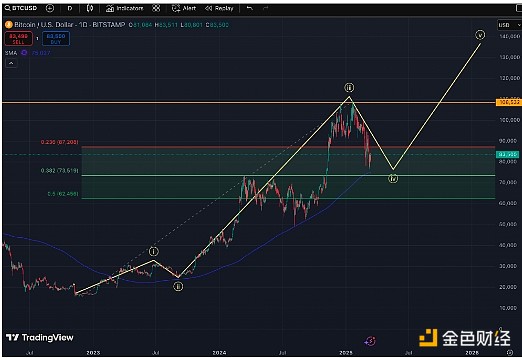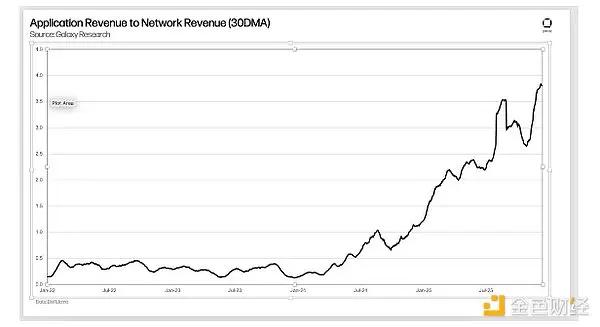Author: Ben Strack, Block; Translated by: Bai Shui, Jinse Finance
For some time, I have been obtaining Bitcoin price technical analysis via email from John Glover, Chief Information Officer of Ledn.
But I was finally able to meet him in person at the digital asset summit.
Glover, who previously served as Managing Director at TD Securities and Barclays Bank, uses the Elliott Wave Theory (studying price patterns related to investor sentiment and psychological changes) to predict BTC prices.
Essentially, the theory is as follows: A highly liquid market will move in five waves towards the main trend direction (three "motivational" stages driving price up, with two downward "correction" stages in between). Then there are three waves contrary to that trend.
Traders sometimes combine this theory with other technical analyses to determine potential entry and exit points.
According to Glover, last week, we might have been near the end of the fourth wave (downward trend) in this broader BTC price uptrend, which began in 2023 at around $16,000. He noted that the market was not moved by Donald Trump's pro-crypto remarks at last week's meeting.

BTC performance since January 2023. Source: TradingView.
Regardless of whether the fourth wave is officially over, Glover anticipates the fifth wave will drive BTC prices to between $130,000 and $135,000 in the first quarter of 2026.
Beyond specific price levels, I asked Glover how people view Bitcoin—a safe haven for some, a risk asset for others.
"Despite our deep liquidity, [Bitcoin's] participants are not numerous enough, and they have not fully understood what it is and formed this perspective," he said.
Those who believe BTC is "digital gold" (and an inflation hedge) might increase their Bitcoin ETF positions during price drops. Those worried that BTC's rise to around $109,000 is just a "Trump rally" might panic and exit.
"For me, [Bitcoin] is digital gold, and it will start tracking gold more closely as more traditional financial participants join," Glover added.
Nearly one-fifth of surveyed financial advisors have not allocated cryptocurrency for clients, planning to increase this exposure in 2025 (more than double the previous year's 8%). But those not yet committed might want to see BTC rise again first, Glover says.
These tend to be trickier positions.
"If people have it in their portfolio, I don't think they'll panic because of a price pullback," Glover said. "I think they'll say, 'Well, it's only 1% of my portfolio, and I'm happy to hold it long-term.'"







